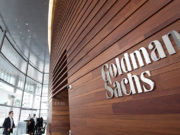Citi Private Bank Global Family Office Survey Insights 2024: 338 Family Offices, 50% with > $500 Million AUM, Generation in Control of Wealth 1st Gen 51%, 2nd Gen 33%, 3rd Gen 16%, 60% of Family offices with Chief Investment Officer (CIO), 30% with No CIO & 10% Outsourced CIO, Portfolio Allocation in Public Equities 28%, Fixed Income 18%, Real Estate 12%, Private Equity Funds 9%, Private Equity Direct 8%, Hedge Funds 4%, Private Credit 3%, Real Estate Funds 2%, Art 1%, Commodities 1%, Digital Assets 1%, Other 2%, Top 5 Private Equity Allocation in Growth Equity, Buyout, Venture Capital, Funds of Funds, Secondary, Top 5 Risks are Interest Rate Evolution, United States / China Relations, Market Overvaluation, Inflation, Stability Of Global Financial System
4th October 2024 | Hong Kong
Citi has released the Citi Private Bank Global Family Office Survey Insights 2024, providing key insights into 338 family offices (50% with AUM > $500 million). Generation in Control of Wealth – 1st Gen 51%, 2nd Gen 33%, 3rd Gen 16%. Region – North America 36%, Europe, Middle East & Africa (EMEA) 28%, APAC 21%, Latin America 14%. No. of Employees – 1 to 3 employees 34%, 4 to 6 employees 26%, 7 to 9 employees 13%, > 10 employees 28%. On Investment – Family offices with Chief Investment Officer (CIO) – In-house 60%, None 30%, Outsourced (OCIO) 10%. Portfolio Allocation – Public equities 28%, Fixed income 18%, Real estate 12%, Private equity funds / fund of funds 9%, Private equity direct 8%, Hedge funds 4%, Private credit 3%, Real estate funds / funds of funds 2%, Art 1%, Commodities 1%, Digital assets 1%, Other 2%. Portfolio Allocation to Region: North America 60%, Europe 16%, APAC ex-China 12%, China 5%, Latin America 5%, Africa & Middle East 3%. Top 5 Increased Asset Allocation – Fixed Income 49%, Public Equity 43%, Private Equity 42%, Real Estate 31%, Cash 31%. Portfolio Value Change in 2023 above +10% – 34% of family offices. Expected Portfolio Return for next 12 months above +10% – 43% of family offices. Expected Portfolio Return for next 12 months above +10% (APAC) – 63% of APAC family offices. Top 5 Risks – Interest rate evolution, United States / China relations, Market overvaluation, Inflation, Stability of global financial system. Top 5 Most bullish asset classes in next 12 months – Private equity direct, Private equity funds / fund of funds, Global developed equities, Real estate, Private credit. Top 5 Most bearish asset classes in next 12 months – Digital assets, Hedge funds, Emerging market fixed income, Emerging market equities, Art. Concentrated Positions in Public or Private Companies – Yes 69% / No 31%. Top 3 Strategies to consider to manage risks (Concentrated Positions in Public or Private Companies) – None 66%, Selling outright 14%, Put options or hedges 14%. Using leverage – Yes 53% / None 47%. To use financing in next 12 months – No 37% / Yes 63%. Top 3 areas to use financing in next 12 months – Real estate ,Private equity limited partner investments, Operating businesses. Business-owning families considering M&A in next 12 months – No 60% / Yes 40%. Top 3 M&A – Strategic acquisitions 21%, Joint ventures 18%, Divestitures 13%. Top 3 M&A region – North America 71%, Europe 45%, APAC ex-China 36%. On Artificial Intelligence investments – Public equity 33%, Private equity funds 30%, Considering to invest 26%. Digital Assets investments – No 73% / Considering & Invested 27%. Top 3 Preferred Digital Assets investments – Direct cryptocurrencies (Eg. Bitcoin, Ethereum), ETFs / private funds, Tokenized securities / assets. Top 5 Private equity allocation – Growth equity, Buyout, Venture capital, Funds of funds, Secondary. Direct Investments – Yes 77%, No 23%. Top 5 Direct Investments Stage Preference – Growth 53%, Early stage 44%, Secondary transactions 32%, Pre-IPO 31%, Startup / Incubation / Seed funding 24%. On Family Office: Top 3 Family Office Primary Focus – Investment Management 93%, Accounting, reporting, tax, admin services 68%, Fostering family unity & continuity 34%. Top 5 Family Office Services (Internal) – Reporting, Investment Management, Accounting, Philanthropy, Lifestyle management. Top 4 Family Office Challenges – Meeting needs & expectations of family members, Adapting to changing market conditions, Implementing technology solutions, Managing costs. Top 3 Roles of Family Office Heads – Investment Manager, Risk Manager, Integrator of Services. Top 3 Investment Functions – Periodic review of performance & rebalancing, Transparent & period reporting process, Robust due diligence process. Top 3 Family Office Setup – Family office separate from family business, Clear processes & internal controls, Governing board. Top 3 Uses of Family Office Using Generative AI – Automation of some operational tasks 13%, Family presentations 13%, Investment analysis or forecasting 12%. Top 3 Measuring metrics for Family Offices – Investment performance relative to benchmarks, Discretionary assessment, Management of family office costs. Top 3 Family Office Well-Managed Risks – Reputation 100%, Legal & regulatory 100%, Investment 99%. International family offices – 71%. Assets held in multiple countries – 53%. Family members with different citizenships or residences – 44%. Art Collection – Yes 40% / No 60%. Sustainable Investments Portfolio Allocation – Yes 62% / No 38%. Top 3 Reasons for Sustainable Investments – Reflect personal values, core beliefs, worldview 35%, Align with family office mission 33%, Target competitive returns over the long term 29%. Top 3 Barriers in Providing Funding to Environmental Causes – Not interested 44%, Lack of familiarity 25%, Issues too intractable (hard) to solve at scale 25%. Top 3 Support Required to Develop Philanthropic Expertise in Family Office – Best practices 74%, Strategic development of your mission 56%, Governance policies 38%. See below for key summary & findings | View Report
“ Citi Private Bank Global Family Office Survey Insights 2024: 338 Family Offices, 50% with > $500 Million AUM, Generation in Control of Wealth 1st Gen 51%, 2nd Gen 33%, 3rd Gen 16%, 60% of Family offices with Chief Investment Officer (CIO), 30% with No CIO & 10% Outsourced CIO, Portfolio Allocation in Public Equities 28%, Fixed Income 18%, Real Estate 12%, Private Equity Funds 9%, Private Equity Direct 8%, Hedge Funds 4%, Private Credit 3%, Real Estate Funds 2%, Art 1%, Commodities 1%, Digital Assets 1%, Other 2%, Top 5 Private Equity Allocation in Growth Equity, Buyout, Venture Capital, Funds of Funds, Secondary, Top 5 Risks are Interest Rate Evolution, United States / China Relations, Market Overvaluation, Inflation, Stability Of Global Financial System “
Citi Private Bank Global Family Office Survey Insights 2024: 338 Family Offices, 50% with > $500 Million AUM, Generation in Control of Wealth 1st Gen 51%, 2nd Gen 33%, 3rd Gen 16%, 60% of Family offices with Chief Investment Officer (CIO), 30% with No CIO & 10% Outsourced CIO, Portfolio Allocation in Public Equities 28%, Fixed Income 18%, Real Estate 12%, Private Equity Funds 9%, Private Equity Direct 8%, Hedge Funds 4%, Private Credit 3%, Real Estate Funds 2%, Art 1%, Commodities 1%, Digital Assets 1%, Other 2%, Top 5 Private Equity Allocation in Growth Equity, Buyout, Venture Capital, Funds of Funds, Secondary, Top 5 Risks are Interest Rate Evolution, United States / China Relations, Market Overvaluation, Inflation, Stability Of Global Financial System

Citi has released the Citi Private Bank Global Family Office Survey Insights 2024, providing key insights into 338 family offices (50% with AUM > $500 million). See below for key summary & findings | View Report
Citi Private Bank Global Family Office Survey Insights 2024
Profile
- No. Family Offices in Survey – 338
- Below $500 million AUM – 50%
- More than $500 million AUM – 50%
- Generation in Control of Wealth – 1st Gen 51%, 2nd Gen 33%, 3rd Gen 16%
- Region – North America 36%, Europe, Middle East & Africa (EMEA) 28%, APAC 21%, Latin America 14%
- No. of Employees – 1 to 3 employees 34%, 4 to 6 employees 26%, 7 to 9 employees 13%, > 10 employees 28%
Summary – Investment
- Family offices with Chief Investment Officer (CIO) – In-house 60%, None 30%, Outsourced (OCIO) 10%
- Portfolio Allocation – Public equities 28%, Fixed income 18%, Real estate 12%, Private equity funds / fund of funds 9%, Private equity direct 8%, Hedge funds 4%, Private credit 3%, Real estate funds / funds of funds 2%, Art 1%, Commodities 1%, Digital assets 1%, Other 2%
- Portfolio Allocation to Region – North America 60%, Europe 16%, APAC ex-China 12%, China 5%, Latin America 5%, Africa & Middle East 3%
- Top 5 Increased Asset Allocation – Fixed Income 49%, Public Equity 43%, Private Equity 42%, Real Estate 31%, Cash 31%
- Portfolio Value Change in 2023 above +10% – 34% of family offices
- Expected Portfolio Return for next 12 months above +10% – 43% of family offices
- Expected Portfolio Return for next 12 months above +10% (APAC) – 63% of APAC family offices
- Top 5 Risks – Interest rate evolution, United States / China relations, Market overvaluation, Inflation, Stability of global financial system
- Top 5 Most bullish asset classes in next 12 months – Private equity direct, Private equity funds / fund of funds, Global developed equities, Real estate, Private credit
- Top 5 Most bearish asset classes in next 12 months – Digital assets, Hedge funds, Emerging market fixed income, Emerging market equities, Art
- Concentrated Positions in Public or Private Companies – Yes 69% / No 31%
- Top 3 Strategies to consider to manage risks (Concentrated Positions in Public or Private Companies) – None 66%, Selling outright 14%, Put options or hedges 14%
- Using leverage – Yes 53% / None 47%
- To use financing in next 12 months – No 37% / Yes 63%
- Top 3 areas to use financing in next 12 months – Real estate ,Private equity limited partner investments, Operating businesses
- Business-owning families considering M&A in next 12 months – No 60% / Yes 40%
- Top 3 M&A – Strategic acquisitions 21%, Joint ventures 18%, Divestitures 13%
- Top 3 M&A region – North America 71%, Europe 45%, APAC ex-China 36%
- On Artificial Intelligence investments – Public equity 33%, Private equity funds 30%, Considering to invest 26%
- Digital Assets investments – No 73% / Considering & Invested 27%
- Top 3 Preferred Digital Assets investments – Direct cryptocurrencies (Eg. Bitcoin, Ethereum), ETFs / private funds, Tokenized securities / assets
- Top 5 Private equity allocation – Growth equity, Buyout, Venture capital, Funds of funds, Secondary
- Direct Investments – Yes 77%, No 23%
- Top 5 Direct Investments Stage Preference – Growth 53%, Early stage 44%, Secondary transactions 32%, Pre-IPO 31%, Startup / Incubation / Seed funding 24%
Summary – Family Office
- Top 3 Family Office Primary Focus – Investment Management 93%, Accounting, reporting, tax, admin services 68%, Fostering family unity & continuity 34%
- Top 5 Family Office Services (Internal) – Reporting, Investment Management, Accounting, Philanthropy, Lifestyle management
- Top 4 Family Office Challenges – Meeting needs & expectations of family members, Adapting to changing market conditions, Implementing technology solutions, Managing costs
- Top 3 Roles of Family Office Heads – Investment Manager, Risk Manager, Integrator of Services
- Top 3 Investment Functions – Periodic review of performance & rebalancing, Transparent & period reporting process, Robust due diligence process
- Top 3 Family Office Setup – Family office separate from family business, Clear processes & internal controls, Governing board
- Top 3 Uses of Family Office Using Generative AI – Automation of some operational tasks 13%, Family presentations 13%, Investment analysis or forecasting 12%
- Top 3 Measuring metrics for Family Offices – Investment performance relative to benchmarks, Discretionary assessment, Management of family office costs
- Top 3 Family Office Well-Managed Risks – Reputation 100%, Legal & regulatory 100%, Investment 99%
- International family offices – 71%
- Assets held in multiple countries – 53%
- Family members with different citizenships or residences – 44%
- Art Collection – Yes 40% / No 60%
- Sustainable Investments Portfolio Allocation – Yes 62% / No 38%
- Top 3 Reasons for Sustainable Investments – Reflect personal values, core beliefs, worldview 35%, Align with family office mission 33%, Target competitive returns over the long term 29%
- Top 3 Barriers in Providing Funding to Environmental Causes – Not interested 44%, Lack of familiarity 25%, Issues too intractable (hard) to solve at scale 25%
- Top 3 Support Required to Develop Philanthropic Expertise in Family Office – Best practices 74%, Strategic development of your mission 56%, Governance policies 38%
Highlights from the Citi Private Bank Family Office Leadership Program:
- Recognize that what got you here won’t get you there
- Ask “why should we stay together?”
- Decide who will lead the process and set some goals
- Determine the right level of togetherness
- Assess your options & make educated decisions
- Remember that every generation is a first generation
- Accept that the family office must evolve or disappear
Citi Private Bank Global Family Office Survey Insights 2024
1) Family Office Profile
Profile:
- No. Family Offices in Survey – 338
- Below $500 million AUM – 50%
- More than $500 million AUM – 50%
Region:
- North America – 36%
- Europe, Middle East & Africa (EMEA) – 28%
- APAC – 21%
- Latin America – 14%
Generation in Control of Wealth:
- 1st Gen – 51%
- 2nd Gen – 33%
- 3rd Gen – 16%
No. of Employees:
- 1 to 3 employees – 34%
- 4 to 6 employees – 26%
- 7 to 9 employees – 13%
- More than 10 employees – 28%
No. of Employees (Below $500 m / Above $500 m AUM):
- 1 to 3 employees – 54% / 15%
- 4 to 6 employees – 24% / 28%
- 7 to 9 employees – 10% / 15%
- More than 10 employees – 12% / 42%
2) Family Office Investment Team
Family offices with Chief Investment Officer (CIO):
- In-house – 60%
- None – 30%
- Outsourced (OCIO) – 10%
Investments managed in-house or via external partners:
- In-house investment professionals – 48%
- In-house team partnering with external investment managers – 32%
- External investment managers – 20%
3) Portfolio Asset Allocation
Portfolio Allocation (Global):
- Public equities – 28%
- Fixed income – 18%
- Real estate – 12%
- Private equity funds / fund of funds – 9%
- Private equity direct – 8%
- Hedge funds – 4%
- Private credit – 3%
- Real estate funds / funds of funds – 2%
- Art – 1%
- Commodities – 1%
- Digital assets – 1%
- Other – 2%
Portfolio Allocation (APAC Family Offices):
- Public equities – 30%
- Fixed income – 24%
- Real estate – 9%
- Private equity funds / fund of funds – 15%
- Private equity direct – 7%
- Hedge funds – 5%
- Private credit – 3%
- Real estate funds / funds of funds – 2%
- Art – 1%
- Commodities – 1%
- Digital assets – 0%
- Other – 2%
Portfolio Allocation to Region:
- North America – 60%
- Europe – 16%
- APAC ex-China – 12%
- China – 5%
- Latin America – 5%
- Africa & Middle East – 3%
Portfolio Allocation to Region (APAC):
- North America – 39%
- Europe – 8%
- APAC ex-China – 38%
- China – 14%
- Latin America – 0%
- Africa & Middle East – 1%
Top 5 Increased Asset Allocation (Global)
- Fixed Income – 49%
- Public Equity – 43%
- Private Equity – 42%
- Real Estate – 31%
- Cash – 31%
Top 5 Decreased Asset Allocation (Global)
- Fixed Income – 13%
- Public Equity – 17%
- Private Equity – 12%
- Real Estate – 14%
- Cash – 37%
Top 5 Increased Asset Allocation (APAC)
- Fixed Income – 42%
- Public Equity – 68%
- Private Equity – 39%
- Real Estate – 26%
- Cash – 39%
Top 5 Decreased Asset Allocation (APAC)
- Fixed Income – 24%
- Public Equity – 12%
- Private Equity – 23%
- Real Estate – 28%
- Cash – 41%
4) Portfolio Returns
Portfolio Value Change in 2023 (Mark-to-market):
- Increased by >20% – 5%
- Increased 10% to 20% – 29%
- Increased 0% to 10% – 43%
- No change – 10%
- Decreased 0% to 10% – 6%
- Decreased 10% to 20% – 5%
- Decreased by >20% – 1%
Expected Portfolio Return for next 12 months:
- More than 15% return – 8%
- 10% to 15% return – 35%
- 5% to 10% return – 46%
- 0 to 5% return – 8%
- Flat – 2%
- 0 to 5% losses – 1%
Expected Portfolio Return for next 12 months (APAC):
- More than 15% return – 18%
- 10% to 15% return – 45%
- 5% to 10% return – 27%
- 0 to 5% return – 7%
- Flat – 3%
- 0 to 5% losses – None
5) Family Office Investment Outlook
Top 9 Risks:
- Interest rate evolution – 52%
- United States / China relations – 45%
- Market overvaluation – 45%
- Inflation – 42%
- Stability of global financial system – 30%
- Middle East conflict -25 %
- Russia / Ukraine war – 16%
- Trade disputes – 14%
- Currency risk – 9%
Most bullish asset classes in next 12 months:
- Private equity direct – 47%
- Private equity funds / fund of funds – 41%
- Global developed equities – 39%
- Real estate – 37%
- Private credit – 35%
- Global developed investment grade fixed income – 34%
- Hedge funds – 25%
- Emerging market equities – 24%
- Global developed corporate high yield fixed income – 24%
- Commodities – 22%
- Cash – 21%
- Digital assets – 17%
- Emerging market fixed income – 12%
- Art – 12%
Most bearish asset classes in next 12 months:
- Digital assets – 28%
- Hedge funds – 25%
- Emerging market fixed income – 25%
- Emerging market equities – 20%
- Art – 19%
- Real estate – 18%
- Cash – 17%
- Private equity funds / fund of funds – 15%
- Global developed corporate high yield fixed income – 14%
- Private credit – 13%
- Commodities – 13%
- Private equity direct – 11%
- Global developed investment grade fixed income – 11%
- Global developed equities – 9%
6) Family Office Investment Insights
Concentrated Positions in Public or Private Companies:
- Yes – 69%
- No – 31%
Will consider strategies to manage risks (Concentrated Positions in Public or Private Companies):
- Yes for private companies – 48%
- Yes for public companies – 36%
- No – 31%
Strategies to consider to manage risks (Concentrated Positions in Public or Private Companies):
- None – 66%
- Selling outright – 14%
- Put options or hedges – 14%
- Other – 8%
- Collars or variable prepaid forwards – 7%
- Covered calls – 6%
- Enhanced selling strategies such as decumulators – 4%
Using leverage:
- None – 47%
- Less than 10% leverage – 29%
- 10% to 20% leverage – 12%
- 20% to 30% leverage – 6%
- More than 30% leverage – 6%
To use financing in next 12 months:
- No – 37%
- Real estate – 36%
- Private equity limited partner investments – 29%
- Operating businesses – 22%
- Concentrated equity position – 13%
- Other – 9%
- Art – 3%
Business-owning families considering M&A in next 12 months:
- No – 60%
- Strategic acquisitions – 21%
- Joint ventures – 18%
- Divestitures – 13%
- Mergers – 8%
Target Region for Business-owning families considering M&A:
- North America – 71%
- Europe – 45%
- APAC ex-China – 36%
- China – 18%
- Latin America – 9%
- Middle East – 8%
- Africa – 7%
Artificial Intelligence investments:
- Public equity – 33%
- Private equity funds – 30%
- Considering to invest – 26%
- Not a priority – 21%
- Direct investments in private companies – 21%
Digital Assets investments:
- Invested > 10% of investible assets – 1%
- Invested 5% to 10% of investible assets – 1%
- Invested < 5% of investible assets – 15%
- Considering – 10%
- Not priority / No interest – 73%
Preferred Digital Assets investments:
- Undecided – 66%
- Direct cryptocurrencies (Eg. Bitcoin, Ethereum) – 24%
- ETFs / private funds – 18%
- Tokenized securities / assets – 8%
- Derivatives / Structured notes – 6%
- Digital art / collectibles / NFTs – 5%
- Stablecoins pegged to fiat currencies – 3%
6) Private Equity / Direct Investments
Private equity allocation:
- Growth equity – 25%
- Buyout – 21%
- Venture capital – 20%
- Funds of funds – 12%
- Secondary – 11%
- Distressed – 5%
- Hybrid – 4%
- Mezzanine – 3%
Direct Investments:
- Yes – 77%
- No – 23%
Changes in Direct Investments:
- Increased significantly – 13%
- Increased – 34%
- Same – 33%
- Decreased – 14%
- Decreased significantly – 6%
Direct Investments Stage Preference:
- Growth (Series C / D) – 53%
- Early stage (Series A / B) – 44%
- Secondary transactions – 32%
- Pre-IPO – 31%
- Startup / Incubation / Seed funding – 24%
- Leveraged buyouts – 13%
7) Family Office Insights
Family Office Primary Focus:
- Investment Management – 93%
- Accounting, reporting, tax, admin services – 68%
- Fostering family unity & continuity – 34%
- Philanthropy – 21%
- Lifestyle management – 16%
Family Office Services (Internal):
- Reporting – 62%
- Investment Management – 53%
- Accounting – 49%
- Philanthropy – 48%
- Lifestyle management – 43%
- Family education – 33%
- Wealth planning – 32%
- Tax – 20%
- Trusteeship – 20%
APAC Family Office Services (Internal):
- Investment Management – 43%
- Reporting – 39%
- Lifestyle management – 38%
- Accounting – 37%
- Family education – 32%
- Philanthropy – 26%
- Tax – 24%
- Wealth planning – 19%
- Trusteeship – 6%
Family Office Challenges:
- Meeting needs & expectations of family members – 54%
- Adapting to changing market conditions – 47%
- Implementing technology solutions – 40%
- Managing costs – 38%
- Navigating regulatory compliance – 29%
- Attracting & retaining talent – 29%
- Networking with peers – 15%
- Maintaining confidentiality & privacy – 11%
8) Family Office Team
Roles of Family Office Heads:
- Investment Manager – 85%
- Risk Manager – 56%
- Integrator of Services – 39%
- Family Unity & Continuity Manager – 36%
- Transition Manager – 22%
- Educator – 15%
Roles of Family Office Heads (APAC):
- Investment Manager – 92%
- Risk Manager – 54%
- Integrator of Services – 40%
- Family Unity & Continuity Manager – 19%
- Transition Manager – 32%
- Educator – 10%
Family offices with Chief Investment Officer (CIO):
- In-house – 60%
- None – 30%
- Outsourced (OCIO) – 10%
Investments managed in-house or via external partners:
- In-house investment professionals – 48%
- In-house team partnering with external investment managers – 32%
- External investment managers – 20%
Investment Functions:
- Periodic review of performance & rebalancing – 76%
- Transparent & period reporting process – 73%
- Robust due diligence process – 60%
- Investment committee – 60%
- Investment policy statement (IPS) – 52%
- Risk management framework – 47%
Investment Functions (APAC):
- Periodic review of performance & rebalancing – 70%
- Investment committee – 55%
- Investment policy statement (IPS) – 51%
- Transparent & period reporting process – 49%
- Robust due diligence process – 44%
- Risk management framework – 39%
9) Family Office Setup
Family Office Setup:
- Family office separate from family business – 71%
- Clear processes & internal controls – 62%
- Governing board – 50%
- Formal strategic plan – 47%
- Leadership succession plan – 35%
- Formal risk management plan – 35%
- Uses client service agreement – 33%
Family Office Setup (APAC):
- Family office separate from family business – 75%
- Leadership succession plan – 51%
- Clear processes & internal controls – 49%
- Governing board – 45%
- Formal strategic plan – 44%
- Formal risk management plan – 40%
- Uses client service agreement – 34%
Family Office Process:
- Secure online access to financial information – 62%
- Cost / benefit analysis to optimize outsourcing decisions – 49%
- Document management system – 46%
- Documented client goals – 43%
- Documented client service agreements – 40%
- State-of-the-art financial reporting tools – 39%
- Disaster recovery plan – 35%
Family Office Process (APAC):
- Documented client goals – 52%
- Documented client service agreements – 49%
- Secure online access to financial information – 48%
- Cost / benefit analysis to optimize outsourcing decisions – 41%
- Document management system – 39%
- Disaster recovery plan – 31%
- State-of-the-art financial reporting tools – 21%
Family Office Using Generative AI:
- Automation of some operational tasks – 13%
- Family presentations – 13%
- Investment analysis or forecasting – 12%
- Investment performance reporting – 6%
- Portfolio construction or optimization – 6%
- Risk management, legal or compliance – 2%
Family Office Using Generative AI (APAC):
- Family presentations – 17%
- Investment analysis or forecasting – 13%
- Investment performance reporting – 13%
- Automation of some operational tasks – 8%
- Portfolio construction or optimization – 7%
- Risk management, legal or compliance – 3%
Measuring metrics for Family Offices:
- Investment performance relative to benchmarks – 73%
- Discretionary assessment – 68%
- Management of family office costs – 60%
- Performance relative to non-investment annual goals – 47%
- Client satisfaction surveys – 21%
Measuring metics for Family Offices (APAC):
- Investment performance relative to benchmarks – 72%
- Discretionary assessment – 77%
- Management of family office costs – 56%
- Performance relative to non-investment annual goals – 51%
- Client satisfaction surveys – 40%
Family Primary Concern:
- Preserving value of assets – 71%
- Preparing next generation to be responsible wealth owners – 59%
- Ensuring shared goals & vision for future together – 47%
- Managing leadership transitions – 26%
- Managing family spending – 23%
- Strengthening family governance – 21%
- Enhancing philanthropic impact – 19%
Family Primary Concern (APAC):
- Preserving value of assets – 57%
- Preparing next generation to be responsible wealth owners – 55%
- Ensuring shared goals & vision for future together – 50%
- Managing leadership transitions – 47%
- Managing family spending – 28%
- Strengthening family governance – 18%
- Enhancing philanthropic impact – 17%
Family Decision-Making Process:
- Investment function – 69%
- Family – 44%
- Family office beyond investing – 44%
- Philanthropic activities – 35%
Family Decision-Making Process (APAC):
- Investment function – 64%
- Family – 47%
- Family office beyond investing – 34%
- Philanthropic activities – 23%
Leadership & Succession Readiness:
- Both Family & Family Office – 15%
- Family – 12%
- Family Office – 12%
- None – 60%
Preparation for Leadership & Succession Readiness:
- Very well – 15%
- Well – 57%
- Not sure – 22%
- Poor 6%
Family Office Well-Managed Risks*:
- Reputation – 100%
- Legal & regulatory – 100%
- Investment – 99%
- Liquidity – 98%
- Operational – 98%
- Family dynamics – 94%
- Geopolitical – 91%
- Cybersecurity – 87%
*Very well managed, well managed & somewhat well-managed
Family Offices:
- International family offices – 71%
- Assets held in multiple countries – 53%
- Family members with different citizenships or residences – 44%
- Family members planning to change citizenships or residences – 19%
10) Art, Sustainable Investment, Philanthropy
Art Collection:
- Yes – 40%
- No – 60%
Sustainable Investments Portfolio Allocation:
- More than 50% of portfolio – 3%
- 25% to 50% of portfolio – 3%
- 10% to 25% of portfolio – 13%
- Less than 10% of portfolio – 43%
- No allocation – 38%
Top Reasons for Sustainable Investments:
- Reflect personal values, core beliefs, worldview – 35%
- Align with family office mission – 33%
- Target competitive returns over the long term – 29%
- Mitigate investment risks associate with ESG issues – 17%
- Generate impact by directly investing in organizations tackling environmental or societal challenges – 11%
- Mitigate reputation risk – 10%
- Other – 8%
- None of above – 31%
Top Challenges for Sustainable Investments:
- Limited availability of investment opportunities with competitive financial performance – 33%
- Unsure how to transform sustainability objectives into actionable investment strategy – 23%
- Lack of compelling investment opportunities that reflect our sustainability aims – 19%
- Need data or reporting to support investment thesis – 17%
- Need for sustainable investing roadmap to guide investment decisions – 13%
- Differing internal views from decision-makers – 13%
- Other – 9%
- None of the above – 36%
Top Barriers in Providing Funding to Environmental Causes:
- Not interested – 44%
- Lack of familiarity – 25%
- Issues too intractable (hard) to solve at scale – 25%
- Lack of in-house expertise, struggle to find like-minded funders – 21%
- No barriers to provide funding (Already a material focus in family office) – 12%
Support Required to Develop Philanthropic Expertise in Family Office:
- Best practices – 74%
- Strategic development of your mission – 56%
- Governance policies – 38%
- Granting strategy implementation – 24%
- Programmatic support – 24%
11) Citi Private Bank Family Office Leadership Program
Highlights from the Citi Private Bank Family Office Leadership Program:
- Recognize that what got you here won’t get you there
- Ask “why should we stay together?”
- Decide who will lead the process and set some goals
- Determine the right level of togetherness
- Assess your options & make educated decisions
- Remember that every generation is a first generation
- Accept that the family office must evolve or disappear
Survey
Our 2024 survey was initiated during Citi Private Bank’s 2024 Family Office Leadership Program on June 4. The survey was subsequently released to family office clients globally and was open for input until July 15. The survey consisted of 50 questions aimed at understanding the investment sentiment, portfolio actions and family office practices of clients in 2024. It drew responses from 338 participants.
Sign Up / Register
Caproasia Users
- Manage $20 million to $3 billion of assets
- Invest $3 million to $300 million
- Advise institutions, billionaires, UHNWs & HNWs
Caproasia Platforms | 11,000 Investors & Advisors
- Caproasia.com
- Caproasia Access
- Caproasia Events
- The Financial Centre | Find Services
- Membership
- Family Office Circle
- Professional Investor Circle
- Investor Relations Network
Monthly Roundtable & Networking
Family Office Programs
The 2025 Investment Day
- March - Hong Kong
- March - Singapore
- July - Hong Kong
- July - Singapore
- Sept- Hong Kong
- Sept - Singapore
- Oct- Hong Kong
- Nov - Singapore
- Visit: The Investment Day | Register: Click here
Caproasia Summits
- The Institutional Investor Summit
- The Investment / Alternatives Summit
- The Private Wealth Summit
- The Family Office Summit
- The CEO & Entrepreneur Summit
- The Capital Markets Summit
- The ESG / Sustainable Investment Summit









































